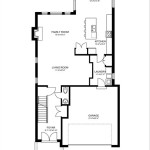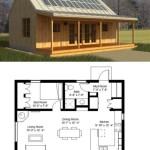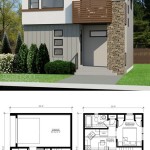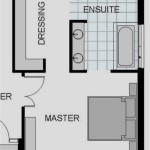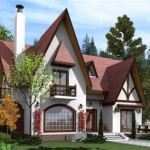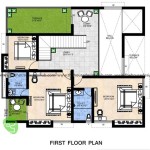Unlocking the Secrets of Underground House Plans: A Visual Guide to Essential Aspects
Underground houses, a sanctuary of comfort and solitude, are gaining popularity for their unique advantages. These homes offer an escape from noise, temperature fluctuations, and natural disasters. If you're considering building an underground home, understanding its essential aspects is crucial. Here's a comprehensive guide with photos to help you navigate the intricacies of underground house plans.
1. Site Selection and Soil Analysis
The foundation of your underground home begins with selecting the ideal site. Look for areas with stable soil conditions and low water tables. Conduct thorough soil analysis to determine load-bearing capacity, drainage, and potential for erosion.

2. Waterproofing and Drainage
Protecting your underground home from moisture is paramount. Proper waterproofing measures include using waterproof membranes, sealants, and drains. Ensure the site has good drainage to prevent water accumulation that could compromise the structure.

3. Ventilation and Air Quality
Underground homes require efficient ventilation systems to maintain healthy indoor air quality. Install mechanical ventilation systems or incorporate natural ventilation techniques such as operable windows or skylights. Proper air filtration is also crucial.

4. Natural Lighting
While sunlight may be limited in underground homes, it's essential to incorporate natural lighting wherever possible. Consider using large windows, skylights, or light tubes to bring in natural light. This not only enhances the ambiance but also reduces energy consumption.

5. Energy Efficiency
Underground homes offer inherent energy efficiency due to their insulation from external temperatures. However, consider additional measures such as energy-efficient appliances, insulation, and renewable energy sources like solar panels to maximize energy savings.

6. Structural Considerations
The unique environment of underground houses requires special structural considerations. Engineers must design the structure to withstand earth loads, moisture, and seismic activity. They employ reinforced concrete, steel, or wood framing techniques to ensure stability.

7. Safety and Emergency Preparedness
Safety is a top priority for underground homes. Install emergency lighting, communication systems, and escape routes in case of power outages or emergencies. Consider fire detection and suppression systems, as well as flood prevention measures.

8. Aesthetics and Interior Design
While functionality is vital, aesthetics should not be neglected in underground homes. Creative interior design techniques can create a warm and inviting atmosphere. Use colorful accents, cozy furniture, and natural elements to enhance the living spaces.

9. Cost Considerations
Building an underground home can be more expensive than traditional above-ground houses. Factors influencing the cost include excavation, waterproofing, insulation, and structural engineering. It's essential to establish a realistic budget and consult with experienced contractors.

10. Legal and Regulatory Aspects
Before embarking on an underground house project, research local building codes and regulations. Obtain necessary permits and ensure your plans meet safety and zoning requirements. Consult with architects and engineers to navigate these aspects effectively.


Lovely Underground Home Plans 4 House Homes Earth Sheltered

How To Build An Underground Home The Tiny Life

Underground Home Plans And Designs Natural Security Shelters

I Wish Underground Homes Earth Sheltered

26 Luxury Hiline Home Plans Underground Homes Earth Sheltered House

Underground House Free Design 3d Floor Plans By Planner 5d

Underground House Design Ideas Pictures 69 Sqm Homestyler

Davis Caves Earth Sheltered Home Underground House Plans Homes

House Plan 10376 Retro Style With 2139 Sq Ft 3 Bed 2 Bath

Designing Building Solar Underground House Sue Robishaw Steve Schmeck


